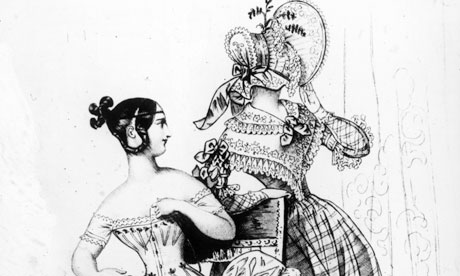
It may look, today, as though body dissatisfaction has reached epidemic proportions but body shaping, dieting and the accompanying humiliation has a long and miserable history.
More than 2,000 years ago the classical world had an ideal body shape to aim for. It was a male body, true, the female being a distortion of the male ideal, but this just meant that nobody was off the hook. The perfect body has always been venerated, in art, medicine, politics and philosophy, and with the advent of mass media in the 19th century its influence was spread even further, even thinner, than ever before.
All of us – men, boys, women and girls – are bombarded with seductive images of the perfect look and shape, and we're offered many ways and means of attempting to achieve it. But what seems new and possible in this game almost never is. The frighteningly popular and much criticised Dukan Diet is actually just the latest rehash in a long line of phased, protein-based diets that stretches back, way past Atkins, to a 16th-century bestselling diet book by Luigi Cornaro. And the "new", much-hyped Six Weeks to OMG: Get skinnier than all your friends, a quick-fix diet for wired-up misery on black coffee and cold baths, is a recipe that's at least 200 years old.
Slimming drugs are big business now, but they have been since the Victorians were swallowing anti-fat pills made of soap, lard, arsenic and various carcinogenic agents. Despite unpleasant, occasionally fatal, side-effects they sell in their millions and there is still always a run on the shops when a new one comes out. You might think that body-shaping surgery was a recent phenomenon, too, but surgeons were slicing away fat in the 1890s. The so-called beauty surgeons lamented that their patients' craving for cosmetic procedures was a "mental twist", but they continued to cut and profit from them.
From the 16th century, many women and girls were laced into bone or metal contraptions that pinched in the waist and accentuated an erotic, fecund figure – the "large brests, large hips" of early modern physical beauty. They manipulated their bodies into the required ideal for the age but risked the crushed internal organs, overlapping ribs and mascerated skin that regularly appeared on physicians' dissecting tables. But by the early 20th century, when sexual equality looked like a possibility, fashionable body shape changed to the "barber pole": straight up-and-down, girdled in rubber and engineered to eliminate feminine curves. The ensuing media hue and cry was hysterical, embodying all the anxieties of change, not just of body shape but of social upheaval, of lesbianism, feminism and the threat to the family.
Attitudes to changing body shapes are not just a recent question of fashion and aesthetics fuelled by the modern media, they have always reflected political and economic change, too. The upheavals of the last century saw the ideal body shape ricochet from the Edwardian hour-glass to the flat flapper, to the 50s sweater girl and on to the skeletal waif. We went from Jane Russell to Twiggy in a generation. If you add the rampant diet industry, a radically different food environment and health concerns to the reach of the media, then it's no wonder there is so much confusion and anxiety.
• Follow Comment is free on Twitter @commentisfree

